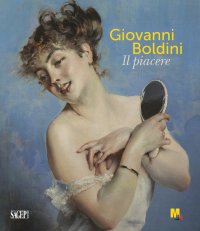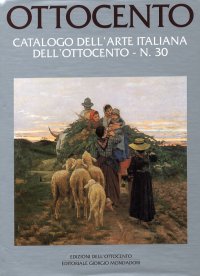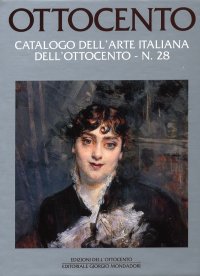Giovanni Boldini. Il Piacere
Rovereto, Mart, November 14, 2020 - February 28, 2021.
Edited by Beatrice Avanzi and Tiziano Panconi.
Genova, 2020; paperback, pp. 368, col. ill., col. plates, cm 24x28.
cover price: € 54.00
|
Books included in the offer:
Giovanni Boldini. Il Piacere
Rovereto, Mart, November 14, 2020 - February 28, 2021.
Edited by Beatrice Avanzi and Tiziano Panconi.
Genova, 2020; paperback, pp. 368, col. ill., col. plates, cm 24x28.
FREE (cover price: € 54.00)
Ottocento. Catalogo dell'Arte Italiana dell'Ottocento. Vol. 30
Milano, 2001; paperback, pp. 495, b/w ill., col. plates, cm 22x30,5.
FREE (cover price: € 40.00)
Ottocento. Catalogo dell'arte italiana dell'Ottocento. VOL. 28
Milano, 1999; bound, pp. 800, col. plates, cm 22x30.
FREE (cover price: € 77.47)
Lezioni di storia dell'arte. Vol. 3: Dal trionfo del barocco all'età romantica
Skira
Milano, 2003; bound, pp. 432, 177 b/w ill., 217 col. ill., cm 17x24,5.
(Storia dell'Arte).
series: Storia dell'Arte
ISBN: 88-8491-401-9 - EAN13: 9788884914019
Subject: Essays (Art or Architecture),Historical Essays,Painting
Period: 1400-1800 (XV-XVIII) Renaissance,1800-1960 (XIX-XX) Modern Period
Places: No Place
Extra: Baroque & Rococo
Languages: 
Weight: 1.35 kg
Important scholars, internationally recognised and involved in wide-ranging fields of research, guide readers through the changes, links and novelties of European art: starting from the Baroque era in Rome, the capital of renewed Catholicism through the rococo developments at the major European courts, Versailles, St. Petersburg, Venice and Madrid, up to the neo-classical periods that led to the romantic and revivalist movements of the nineteenth century.
Through a broad selection of specialist essays, this third volume entitled Dal trionfo del barocco all'età romantica, covers the birth and development of baroque culture in Italy and Europe, the characteristics of the great movements in late baroque and rococo painting, from Velázquez to Tiepolo, the influence of Bernini's sculpture, to the renewed love for antiquity in the neo-classical period and concludes with the subsequent crisis in favour of the new romantic temperament.
The single essays are connected by short linking texts aimed at giving the reader a synthesis of the transformations that occurred in artistic language and the developments that led from one epoch to the next, further corroborated by images of emblematic masterpieces from each period and synoptic tables that underline the close ties between historical events and artistic enterprise.











